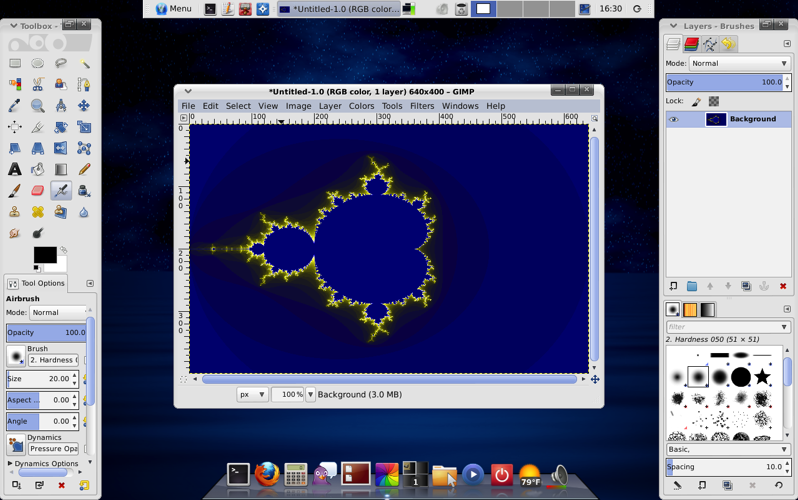
The GIMP (like free Photoshop) running under Vector Linux 7 on an ancient Dell Inspiron E1505 laptop.
The Laptop Project
I've been working on The Laptop Project since 2012. In that time, I've collected lots of unused laptops from neighbors via solicitations on our neighborhood email list and also from members of Congregation Beth Israel and their friends. Machines have gone to students at Austin Community College and area high schools. A couple of machines have also been given to unemployed adults who need a computer to help in a job search. In the spring of 2014, I developed a relationship with some of the folks at Ann Richards School, supplying laptop computers to their students. It's been and continues a remarkably fun and gratifying experience!
If you would like to donate to the project, send me a message on the Contact Page. Laptop Computers should be in good structural condition (for example, no broken hinges or cracked cases). I will also accept monetary donations to help purchase needed replacement parts.
If you would like to donate to the project, send me a message on the Contact Page. Laptop Computers should be in good structural condition (for example, no broken hinges or cracked cases). I will also accept monetary donations to help purchase needed replacement parts.
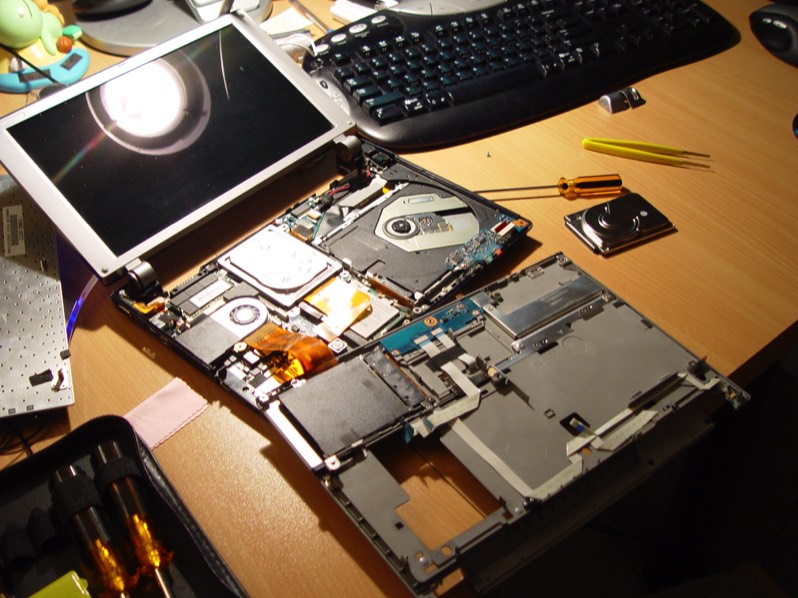
Makes my heart go pitter-patter. Yes, it does.
Early Origins
You might say that the The Laptop Project's origins date back to when I was a small kid. For as long as I can remember, I have loved taking things apart and seeing how they work. You know those embarrassing family stories about when you were a kid? The ones your parents insist on telling over and over again? My folks used to love to tell the one about the time I disassembled our jammed garage door lock and fixed it with Scotch tape.

Hey, boys and girls!
The Computer Bug
I was bitten by the computer bug, specifically, in 1984. Our Hebrew Union College graduating class of '85 was probably the first HUC Rabbinic School class most of whose members had purchased some of the earliest personal computers, with which we wrote our Senior Rabbinic Theses. This was back in the days when "personal computer" meant "Apple IIc,8" "Atari ST" or even "Coleco Adam."1 I opted for the Kaypro 2X2, a 26-pound "luggable" computer running the CP/M operating system, featuring two 5.25" floppy disc drives and a 9" diagonal monochrome (green) screen. I wrote my Thesis on that Kaypro in WordStar and printed it out on an early Epson daisywheel printer.
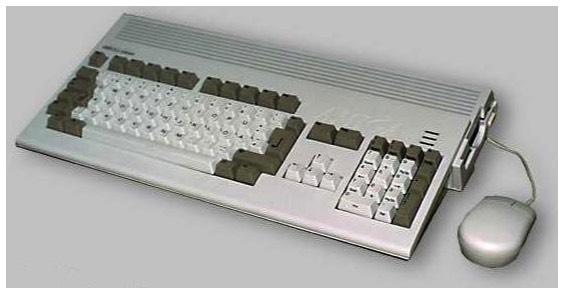
A Commodore Amiga A1200. The all-in-one design featured a hard drive inside, an expansion port underneath and a floppy drive on the right. A classic.
Mi Amiga
When the time came to replace the Kaypro 2X, a completely rational person would have purchased a state of the art PC, which in those days would have meant a Compaq or IBM with a 386 SX processor and, say, 64 MB of RAM. But not being completely rational (and even then nursing a distaste for all things Microsoft) I purchased the just-released Commodore Amiga A1200 at a now defunct Amiga specialist dealer in Austin called The Station.
Famous for being the first true multimedia computer, the Amiga displayed hundreds of thousands of colors out of the box, had speech synthesis, stereo sound and a true, pre-emptive, multitasking operating system. It also played great arcade games like the fiendishly difficult platform-puzzler Shadow Of The Beast by Psygnosis.3 In a famous moment of early computer PR, at the Amiga 1000's launch event, Commodore Business Machines got Andy Warhol to manipulate Deborah Harry's (yes, that Deborah Harry) image in real time with the first color paint program for a home computer.7 People were blown away at the demo. The Amiga also spawned the Demo Scene, a phenomenon in which groups of young coders would create multimedia demos, seeing how much impressive sound and video they could cram onto an 880 kilobyte floppy disk, competing for prizes and bragging rights in "DemoScene" competitions.
Between 1992 and 2002, the beloved A1200 was my sole computer for activities as diverse as writing (I even wrote a published Jewish history textbook on it), Internet, email and (of course) gaming. I was so deep into the Amiga scene that I used to attend an annual Amiga fair and trade show in St. Louis and wrote reviews for several Amiga magazines, including the Amiga Informer (USA) and AmigActive (UK). For a number of years, I was also President of CTACS, the Central Texas Amiga Computing Society (which still meets today).
Sadly, Commodore, Amiga's parent company, filed for bankruptcy in 1994. And yet, a robust cottage industry manufacturing all manner of add-ons and doodads for the entire Amiga line (many from Europe, where the Amiga was a bigger success than in the US) extended the life of the platform far beyond its designers wildest dreams. I hacked my A1200 into an Ateo Concepts (from France) tower case that included a graphics card, accelerated serial port, SCSI port, 50 MHz 68060 accelerator with 4 MB RAM, internal SCSI CD drive, internal 100 MB SCSI Zip Drive, display scan-doubler and Ethernet port. I still have that machine, although with the purchase of an iMac G44 in 2002, the Amiga became more of a hobby and my day to day work was done on the Mac.
Famous for being the first true multimedia computer, the Amiga displayed hundreds of thousands of colors out of the box, had speech synthesis, stereo sound and a true, pre-emptive, multitasking operating system. It also played great arcade games like the fiendishly difficult platform-puzzler Shadow Of The Beast by Psygnosis.3 In a famous moment of early computer PR, at the Amiga 1000's launch event, Commodore Business Machines got Andy Warhol to manipulate Deborah Harry's (yes, that Deborah Harry) image in real time with the first color paint program for a home computer.7 People were blown away at the demo. The Amiga also spawned the Demo Scene, a phenomenon in which groups of young coders would create multimedia demos, seeing how much impressive sound and video they could cram onto an 880 kilobyte floppy disk, competing for prizes and bragging rights in "DemoScene" competitions.
Between 1992 and 2002, the beloved A1200 was my sole computer for activities as diverse as writing (I even wrote a published Jewish history textbook on it), Internet, email and (of course) gaming. I was so deep into the Amiga scene that I used to attend an annual Amiga fair and trade show in St. Louis and wrote reviews for several Amiga magazines, including the Amiga Informer (USA) and AmigActive (UK). For a number of years, I was also President of CTACS, the Central Texas Amiga Computing Society (which still meets today).
Sadly, Commodore, Amiga's parent company, filed for bankruptcy in 1994. And yet, a robust cottage industry manufacturing all manner of add-ons and doodads for the entire Amiga line (many from Europe, where the Amiga was a bigger success than in the US) extended the life of the platform far beyond its designers wildest dreams. I hacked my A1200 into an Ateo Concepts (from France) tower case that included a graphics card, accelerated serial port, SCSI port, 50 MHz 68060 accelerator with 4 MB RAM, internal SCSI CD drive, internal 100 MB SCSI Zip Drive, display scan-doubler and Ethernet port. I still have that machine, although with the purchase of an iMac G44 in 2002, the Amiga became more of a hobby and my day to day work was done on the Mac.

Tux, the Linux Mascot
Enter The Penguin
A few years later, my brother introduced me to the free, open-source operating system known as Linux. When the hard disk of his PC running Windows became corrupted, he wiped the drive and installed Linux, and was hooked. It seemed that despite the almost complete corporate takeover of personal computing, at leasts some of the spirit of 1980's hobbyist computing lived on in the Linux scene. I, too, started playing around with Linux and was fascinated. There are hundreds of flavors of Linux, called distributions (or "distros" for short) and nearly all of them are free to download and install, as is a wealth of free and open source software, perhaps most notably the awesome LibreOffice, a completely free replacement for Microsoft Office. At some point, someone gave me an old, outdated laptop that had been gathering dust in a closet and I got to wondering if I could make it usable with Linux. After all, there are Linux distros that cater to older hardware... and sure enough, the experience of bring a dead machine back to usability proved deeply satisfying, almost wondrous. A laptop designed for Windows XP (that will, in fact run XP with all the finesse of a three-legged, asthmatic dog)5 will feel like a speed demon running a lean distro like Bodhi Linux,6 Puppy Linux or Slitaz Linux. At that moment the idea for what would be The Laptop Project was born: What if I could collect unused laptops, physically refurbish them, load Linux on them and give them away to disadvantaged students or adults? It seemed like a win-win-win: I get some play therapy, someone gets a computer who can't afford one, and these old machines are reused and kept out of landfills. Additionally, pairing people of limited financial means with computers running Open Source software makes perfect sense: the software is free!
-
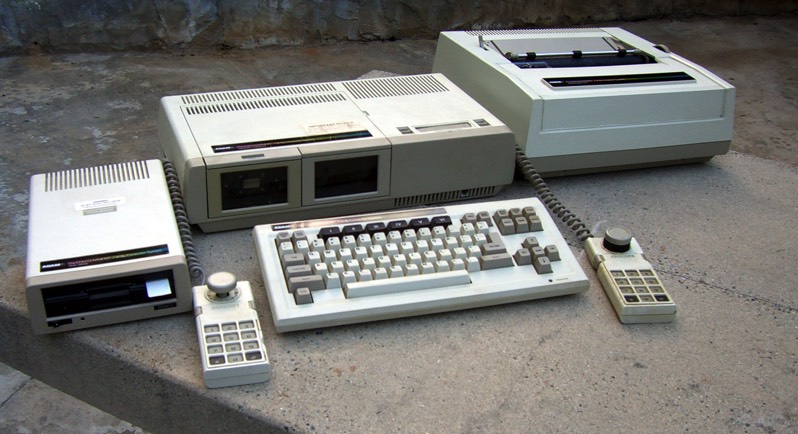
The "Adam Bomb"
The Adam was an early personal computer sold by Coleco, an American toy manufacturer best known for its Cabbage Patch Dolls and a baseball simulation board game. The Adam included a computer, tape storage drive, game controllers and daisy wheel printer for only $750! But it was so poorly designed and crash-prone that Coleco stopped selling it within two years. An HUC classmate of mine who has gone on to a distinguished and scholarly career purchased a Coleco Adam upon which he began writing his Rabbinic Thesis. When the "Adam Bomb" crashed and took his thesis with it, he had to start over again from scratch. -
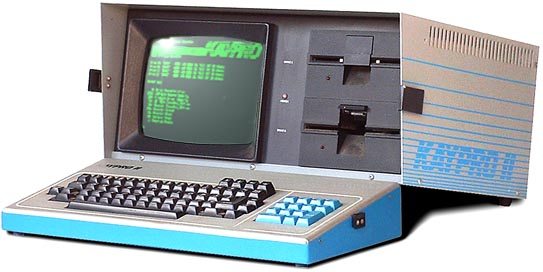
The mighty Kaypro. I still have mine in a closet somewhere.
-
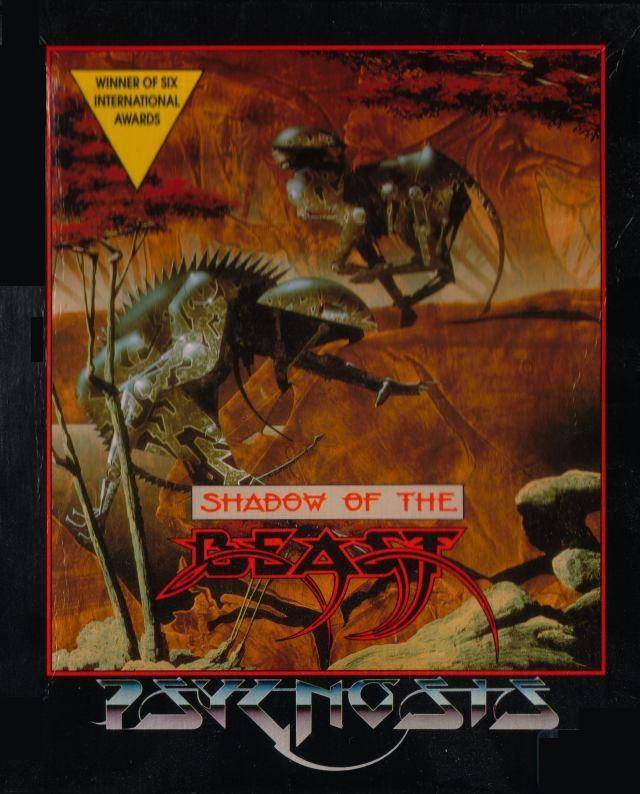
-

-

"3-Legged Asthmatic Dog"
(No actual dogs were harmed in the making of this simile.) - (My personal fave.)
-
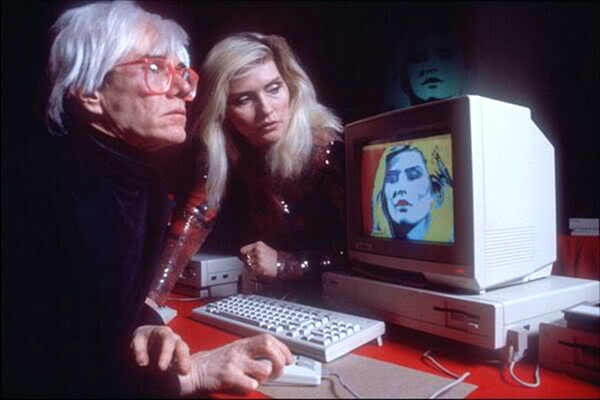
Andy Warhol and Deborah Harry at the Amiga A1000 launch event.
-
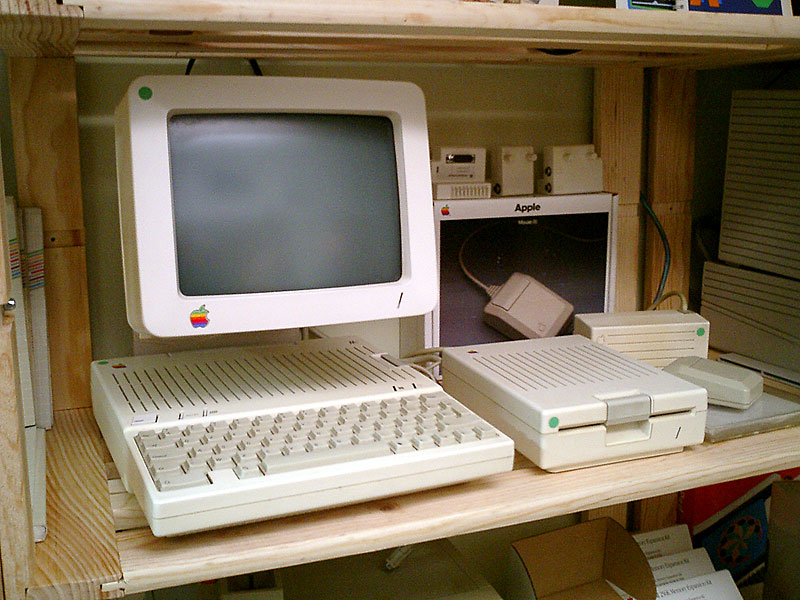
Another HUC classmate of mine bought an Apple IIc, which looked impossibly cool in those days. Never could get it to talk to his Okidata printer, though...